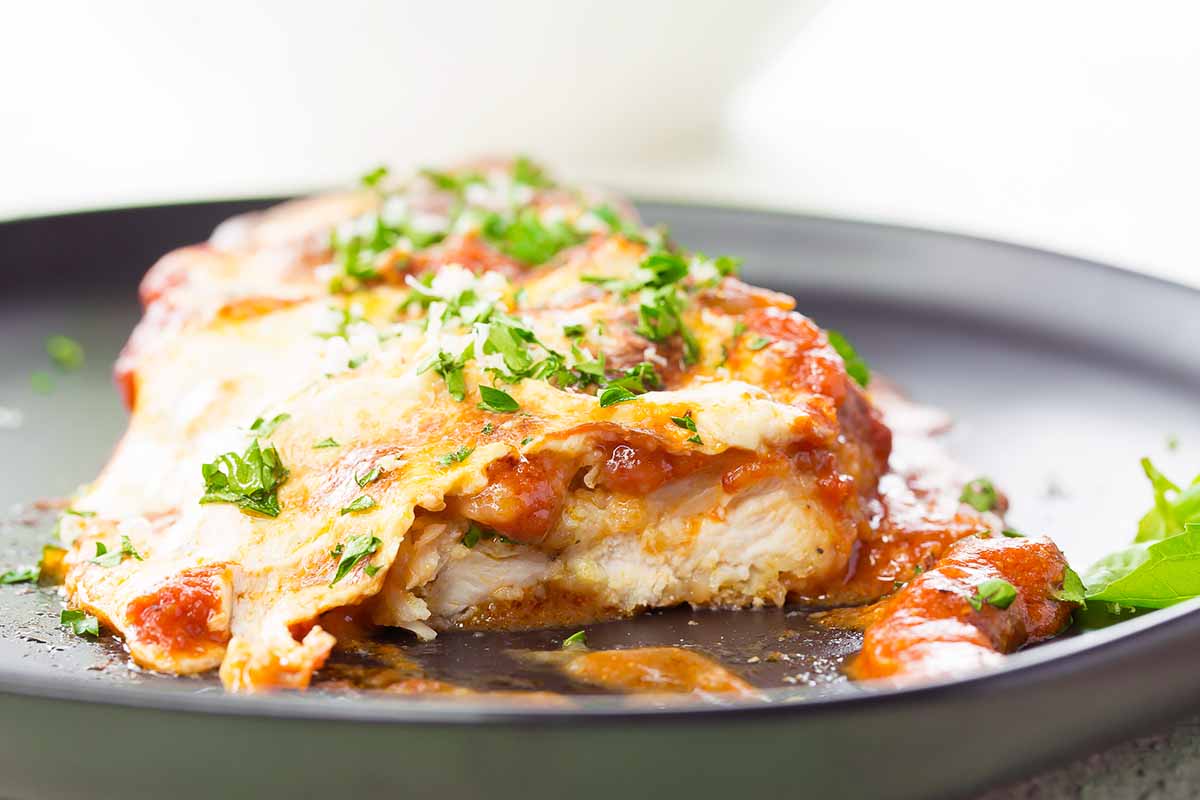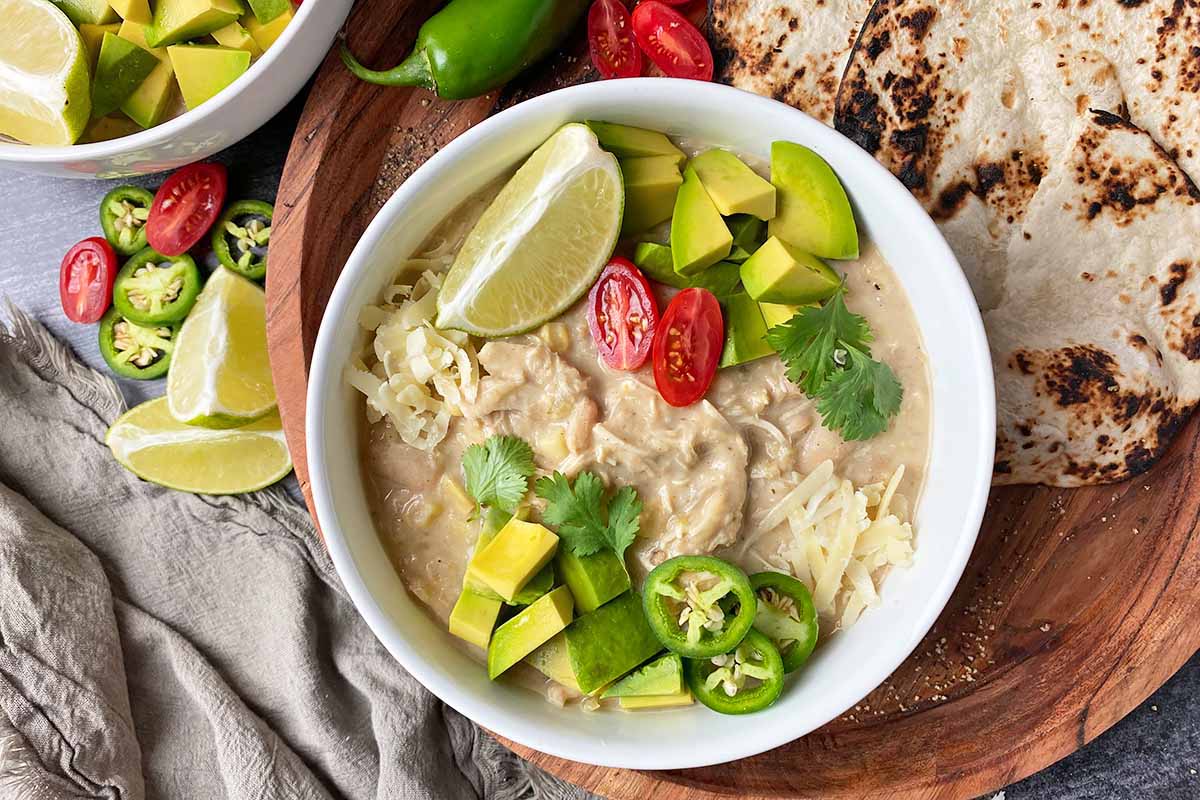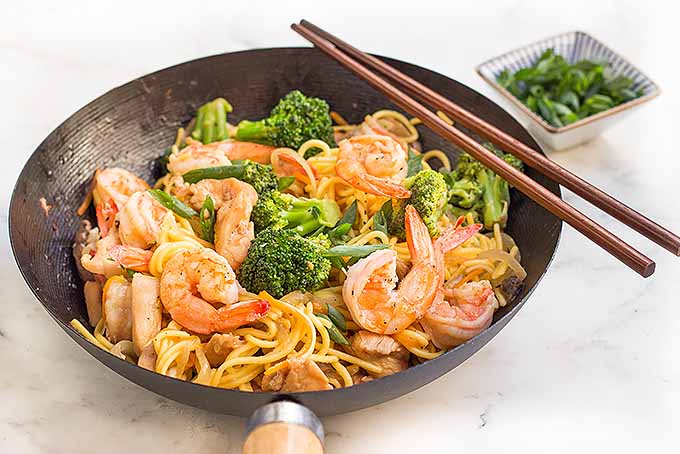Wing, thigh, breast, or drumstick?
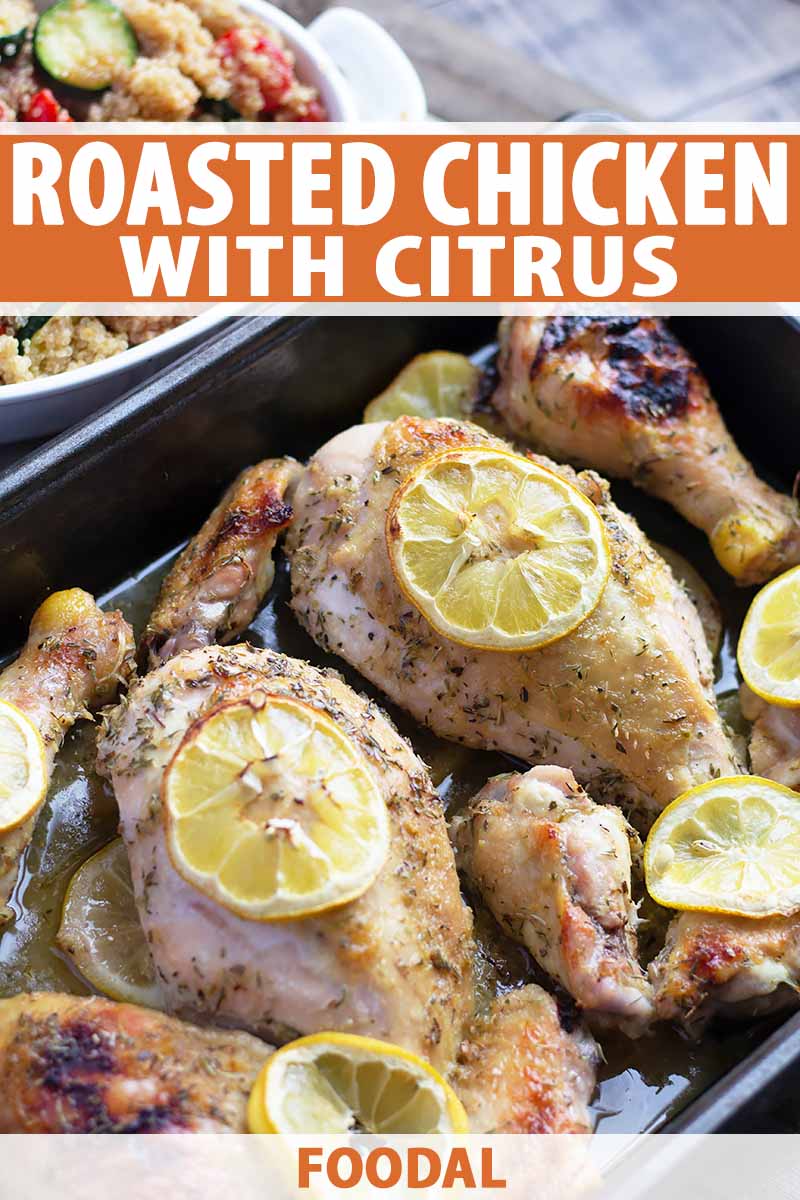
As a dietitian, I feel like I should be all-in for team chicken breast, but drumsticks are my favorite.
Drumsticks are juicier than breast meat, have a better meat-to-bone ratio than wings, and the bones are perfect for making stock.
But that’s just my personal opinion. My husband will always take wings over any other cut.
Then there are also the chicken thigh fans out there. Slightly higher in fat and calories, the thighs are more buttery and indulgent than the breast meat, a perfect choice for a dark meat main course. Plus, considering the amount of meat you get per pound, they’re often the most budget-friendly.
So what do you do when you’re cooking for a group? Do you assume everyone is more health-conscious and bake breasts? Or go for the cheaper and, arguably, more fun to eat cuts?
I’m here to tell you that luckily, you don’t have to choose.
While buying individual cuts is convenient, whole roasted birds give you a choice of all the pieces, and are usually much more economical.
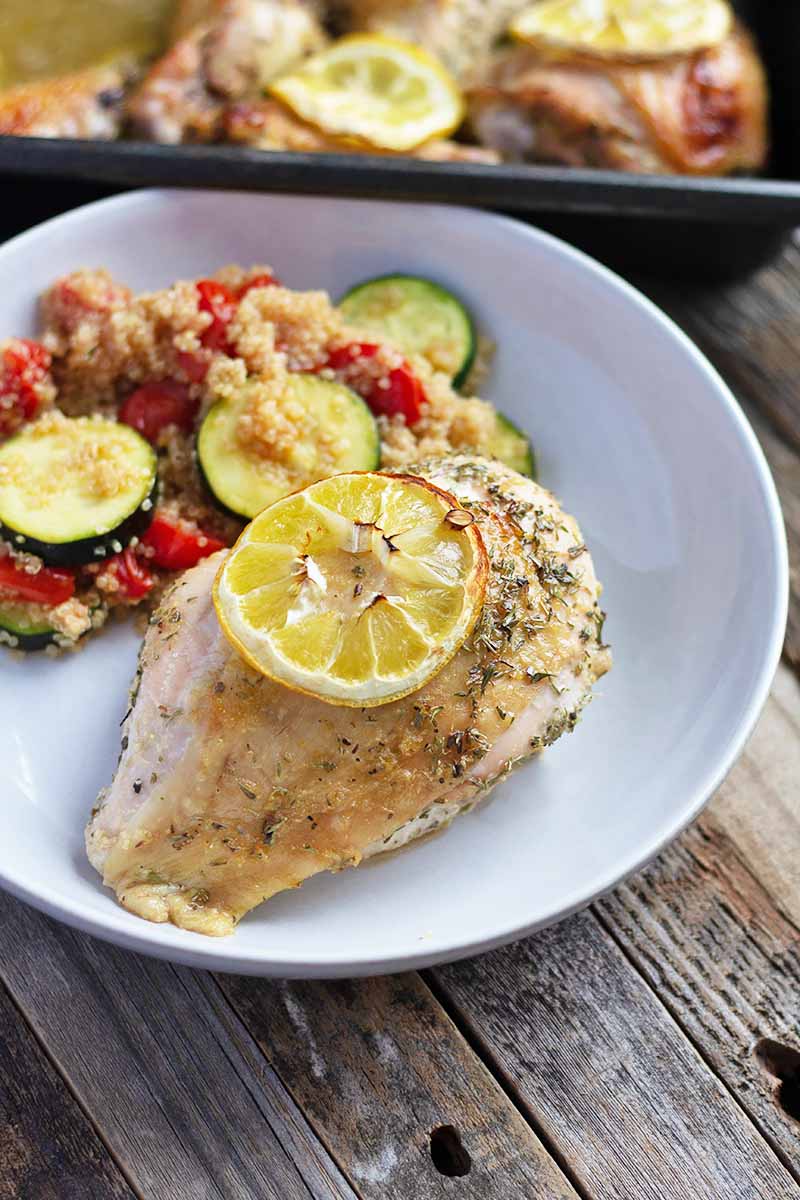
If you’ve never broken down a whole chicken before, it’s worth trying at least once. You’ll want to clean off a large area of your counter, grab a large cutting board, butcher knife, smaller knife, and ideally kitchen shears. I also like to keep the trash can next to me if I don’t plan to save the discarded bones for stock.
While doing this prep work myself definitely took a little time on the first try, by the second I understood the poultry better, and was surprised by how quickly I had all the different cuts separated.
If the idea of cutting apart your own poultry sounds utterly unappealing, you can also buy packages of meat that has already been broken down for you.
Now that you have your chicken, the next big decision is: skin on or skin off?
While it’s widely believed that eating roasted chicken skin will blow your saturated fat budget for the day, a 12-ounce portion of bone-in breast with skin only has 2.5 more grams of saturated fat than a skinless portion. As long as you keep your portions in check, there’s no need to worry about removing that perfectly browned skin if you enjoy it.
However, if you’re set on removing the skin before eating, I still recommend keeping the skin on during cooking as it will give the meat a richer texture and help to lock in the moisture.
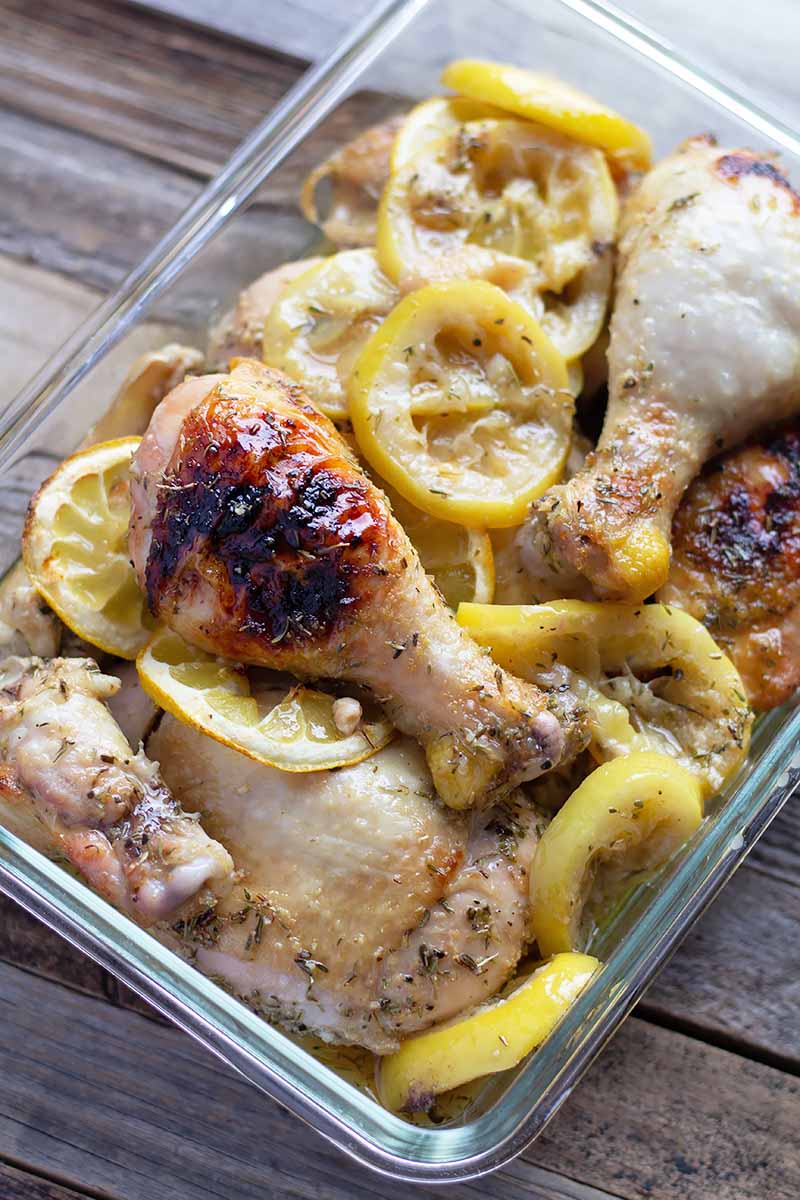
Speaking of fat, let’s talk about why I went with avocado oil for this recipe.
There are a few staple ingredients that I’m stocked up on at all times, two of which are avocado and extra virgin olive oil. When discussing the healthiest oils to cook with, these two are at the top of the list in my opinion.
All oils are comprised of 100% fat, but the types of fat that these consist of may differ. Avocado and olive are nutritious standouts since they’re high in heart-healthy monounsaturated fat, and low in less healthy saturated fats.
So how do I choose which one to use when? The two biggest factors are smoke point and flavor.
Extra virgin olive oil has a low smoke point, meaning that at temperatures above 350°F, healthful compounds in the oil break down and potentially dangerous chemicals can be released. This breakdown can also result in that bitter, unpleasant flavor and odor that we associate with burnt foods.
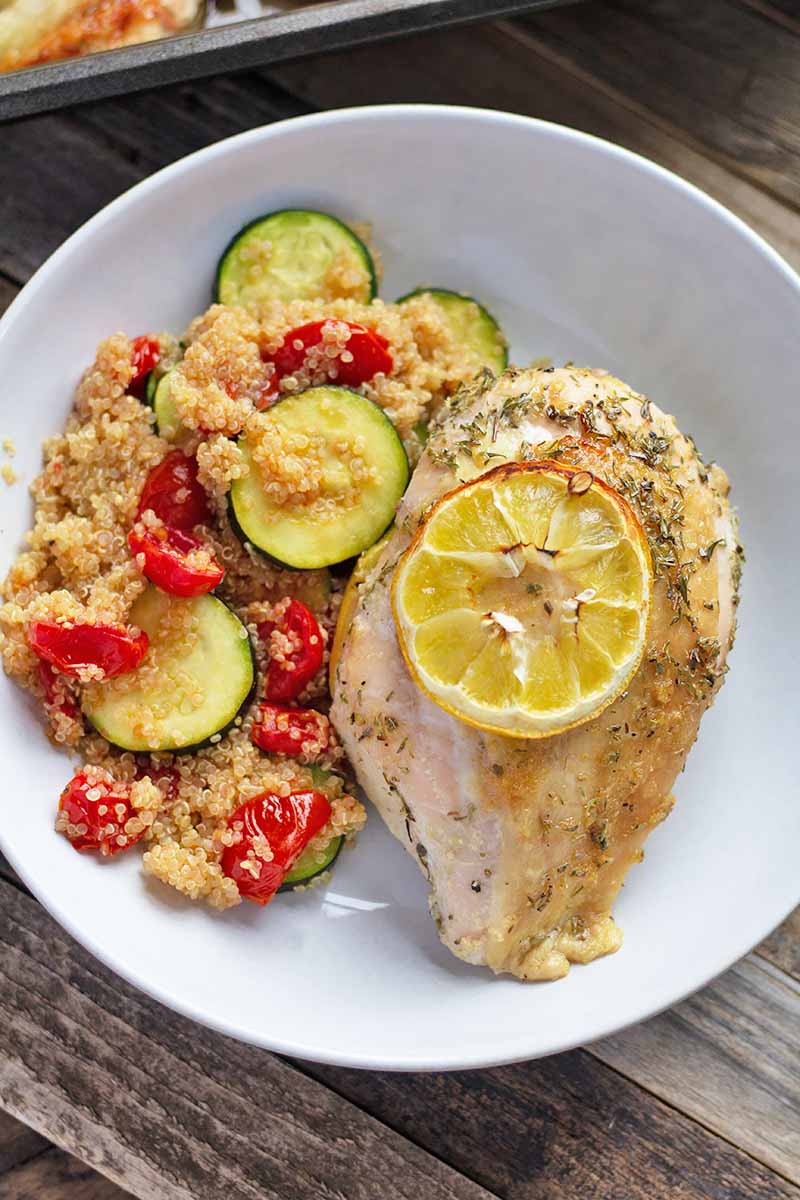
As a result, reserve that expensive bottle of extra virgin olive oil for lower temperature cooking, use it in dishes that don’t require heat to prepare (such as salad dressings or hummus), or drizzle some over a cooked dish for a little extra flavor just before serving.
Avocado oil, on the other hand, has a milder flavor than olive and a higher smoke point. This makes it ideal for high heat cooking. While I’ve seen the number vary, most sources report that you can use avocado oil for temperatures up to 520°F.
If you don’t have avocado oil on hand, you can use canola oil instead.
Now that you have the chicken and the oil figured out, all that’s left is making the marinade.
Made with just a few dried herbs, fresh lemon juice, honey, and garlic, there’s nothing fancy going on, just savory, citrusy goodness.
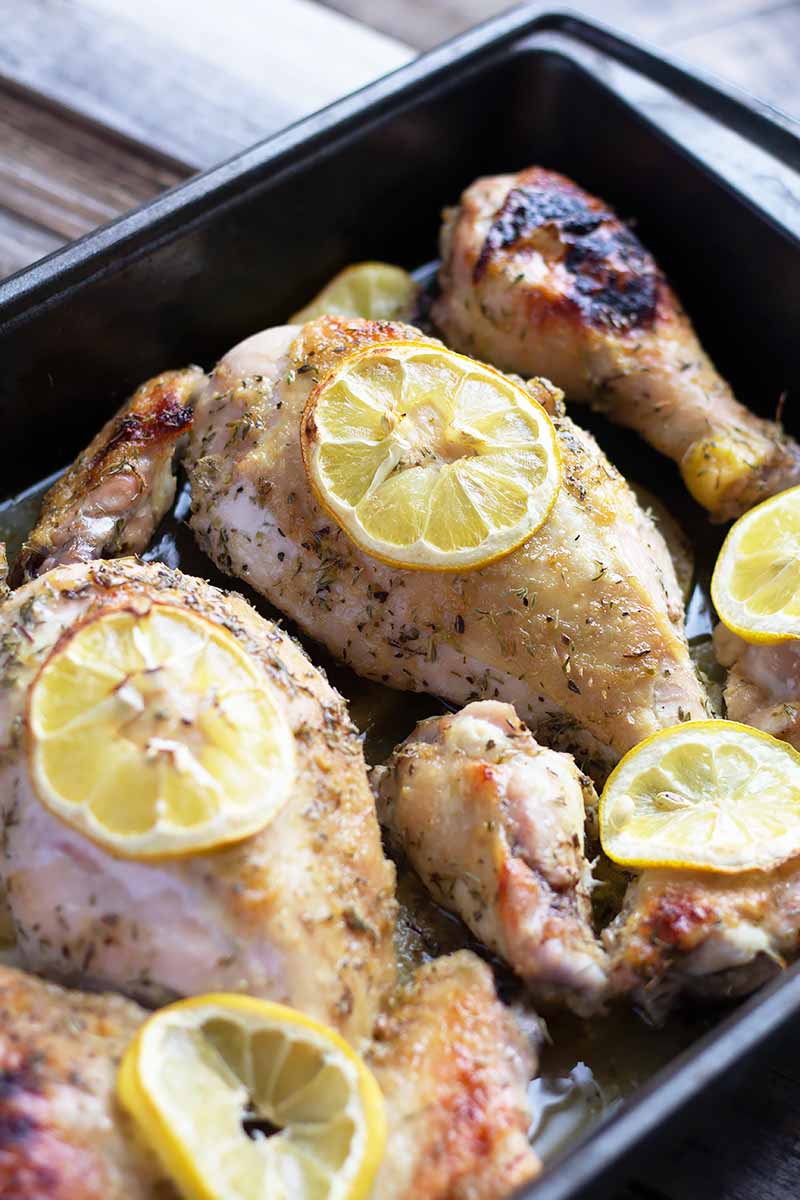
Now all you need is some rice or quinoa to soak up all that extra sauce (or maybe a garlic knot or two if you’re allowing a few extra carbs to sneak into your diet!), since it’d be a shame for it to go to waste!
Print
Citrus Roasted Chicken
- Total Time: 1 hour, 15 minutes
- Yield: 4 servings 1x
Description
Marinated in a bright and herby lemon garlic sauce, this citrus roasted chicken is sure to become a Sunday night dinner staple.
Ingredients
- 1/4 cup avocado or canola oil
- 3 cloves garlic, minced
- 2 tablespoons honey
- Juice of 1 lemon
- 1/2 teaspoon dried parsley
- 1/2 teaspoon dried oregano
- 1/2 teaspoon dried thyme
- 1 teaspoon salt
- 1/2 teaspoon ground black pepper
- 1 whole roasted chicken (3-4 pounds), broken down into eight pieces
- 2 lemons, sliced thin
Instructions
- In a small mixing bowl, whisk together oil, garlic, honey, lemon juice, parsley, oregano, thyme, salt and pepper. Set aside.
- Place chicken pieces in a large resealable bag or container and pour marinade over the top. Marinate in fridge for 8 hours, or overnight.
- When you’re ready to roast, preheat oven to 400oF.
- Arrange half of the lemon slices in the bottom of a 9-by-11-inch baking dish and then place marinated chicken pieces on top in an even layer. Pour leftover marinade over chicken and then top with remaining lemon slices.
- Bake for 55-60 minutes, or until the breasts reach an internal temperature of 165°F and the thighs are 170°F.
- Remove from oven and let rest at least 10 minutes before serving.
- Prep Time: 20 minutes
- Cook Time: 55 minutes
- Category: Chicken
- Method: Oven
- Cuisine: Protein
Keywords: chicken, lemon
Cooking By the Numbers…
Step 1 – Break Down Chicken and Measure Ingredients
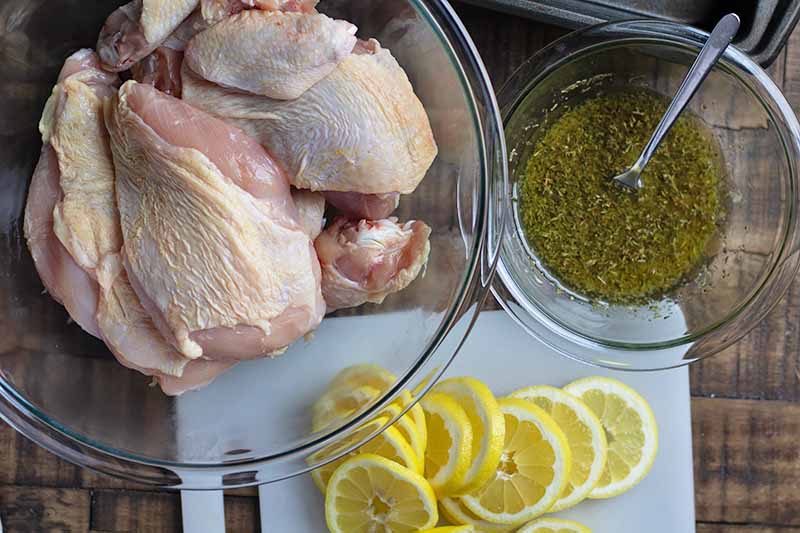
Break the chicken down into eight pieces: 2 breasts, 2 thighs, 2 wings, and 2 drumsticks. Place them in a large bowl or resealable plastic bag.
Measure out all of the remaining ingredients.
Step 2 – Make Marinade

In a small mixing bowl, whisk together the oil, garlic, honey, lemon juice, parsley, oregano, thyme, salt, and pepper (freshly cracked is our preference).
Step 3 – Marinate
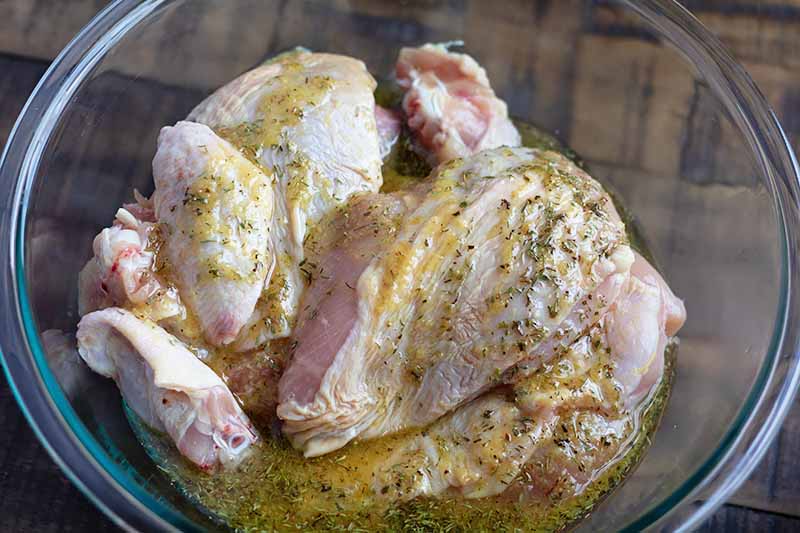
Pour the marinade over the pieces. Place it in the fridge and marinate for at least 8 hours, or overnight.
Step 4 – Preheat Oven, Slice, and Assemble
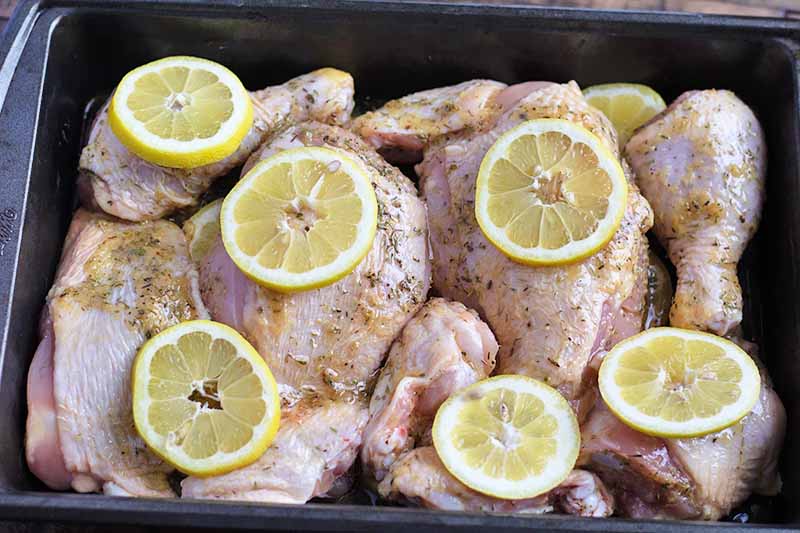
When you’re ready to cook, preheat your oven to 400°F and set out a 9-by-11-inch roasting pan.
Cut the lemons into thin slices, and remove any seeds. Arrange half of slices on the bottom of the baking pan.
Set the poultry pieces on top of lemon slices in an even layer. Pour the leftover marinade over the chicken, and then top with the remaining lemon slices.
Step 5 – Roast
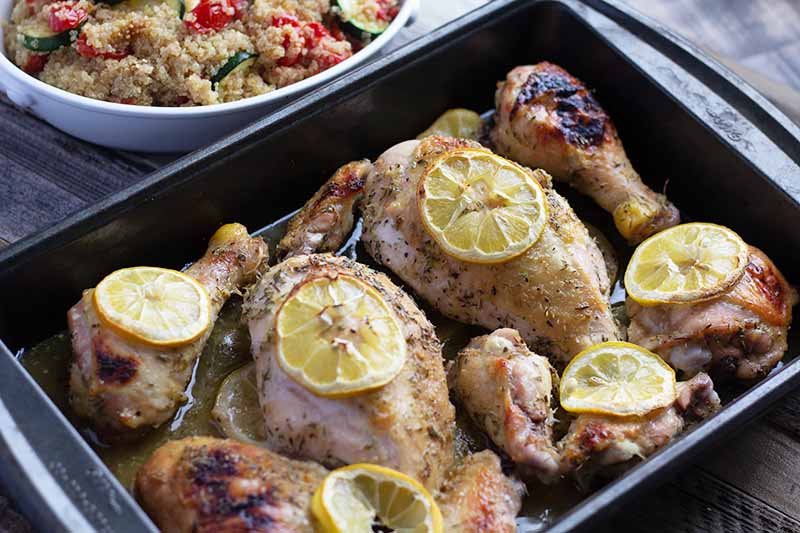
Roast in the oven for 55-60 minutes or until cooked through. Using a meat thermometer is the best way to tell when your chicken is ready. The internal temperature of the breast meat should be 165°F without touching the bone, and thigh meat should register 170°F.
Remove the pan from the oven and let rest for 10 minutes before serving.
Make It a Balanced Meal with a Whole Grain and Veggies
While my husband would argue that a plate of wings is a full dinner, nutritional science disagrees.
To make this a balanced meal, serve this dish with a whole grain, such as quinoa, einkorn, or brown rice. Not only will these grains provide fiber and important vitamins, but they’re also essential for absorbing all those lemony juices from the marinade.
As for vegetables, my go-to is always roasted, so you can just throw them in the oven when there’s 20-30 minutes left on the chicken, and everything will be ready at the same time.
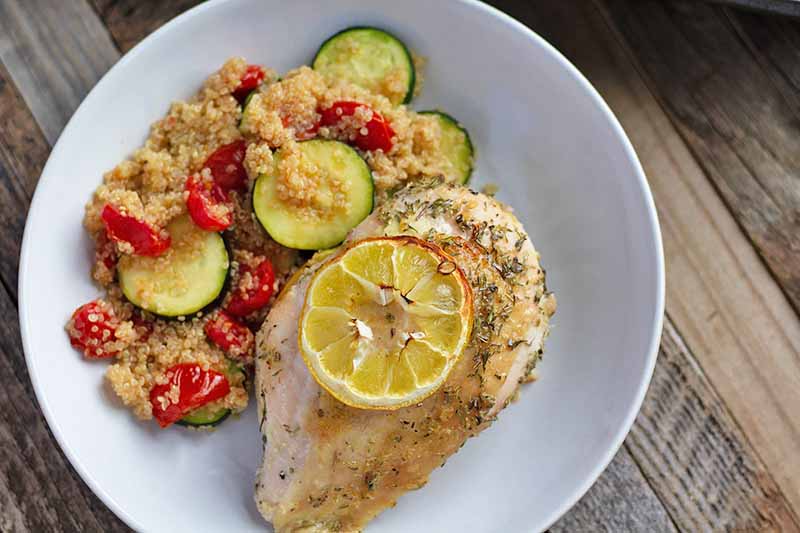
If you’re already tired of chopping from breaking down the chicken, a green salad will work perfectly.
Or why not make a side dish that has both? I served this main meal with Foodal’s Lemony Quinoa Bowls with Roasted Zucchini and Tomatoes and enjoyed a super satisfying and delicious meal.
For more delicious chicken dishes, we suggest more of this roasted and baked recipes:
- Cajun Blackened Chicken
- Sheet Pan Roast Chicken with Tomatoes
- Crispy Baked Buttermilk and Spelt Fingers
Let us know what you decide to serve with your roasted chicken in the comments below. And don’t forget to show us and others how much you loved this recipe by giving it a rating!
Photos by Kelli McGrane, © Ask the Experts, LLC. ALL RIGHTS RESERVED. See our TOS for more details. Originally published on August 25, 2013. Last updated: October 18, 2022 at 9:20 am.
Nutritional information derived from a database of known generic and branded foods and ingredients and was not compiled by a registered dietitian or submitted for lab testing. It should be viewed as an approximation.
The written contents of this article have been reviewed and verified by a registered dietitian for informational purposes only. This article should not be construed as personalized or professional medical advice. Foodal and Ask the Experts, LLC assume no liability for the use or misuse of the material presented above. Always consult with a medical professional before changing your diet, or using supplements or manufactured or natural medications.
About Kelli McGrane, MS, RD
Kelli McGrane is a Denver-based registered dietitian with a lifelong love of food. She holds undergraduate and master’s degrees in nutrition science from Boston University. As a registered dietitian, she believes in the importance of food to nourish not only your body, but your soul as well. Nutrition is very personal, and you won’t find any food rules here, other than to simply enjoy what you eat.


